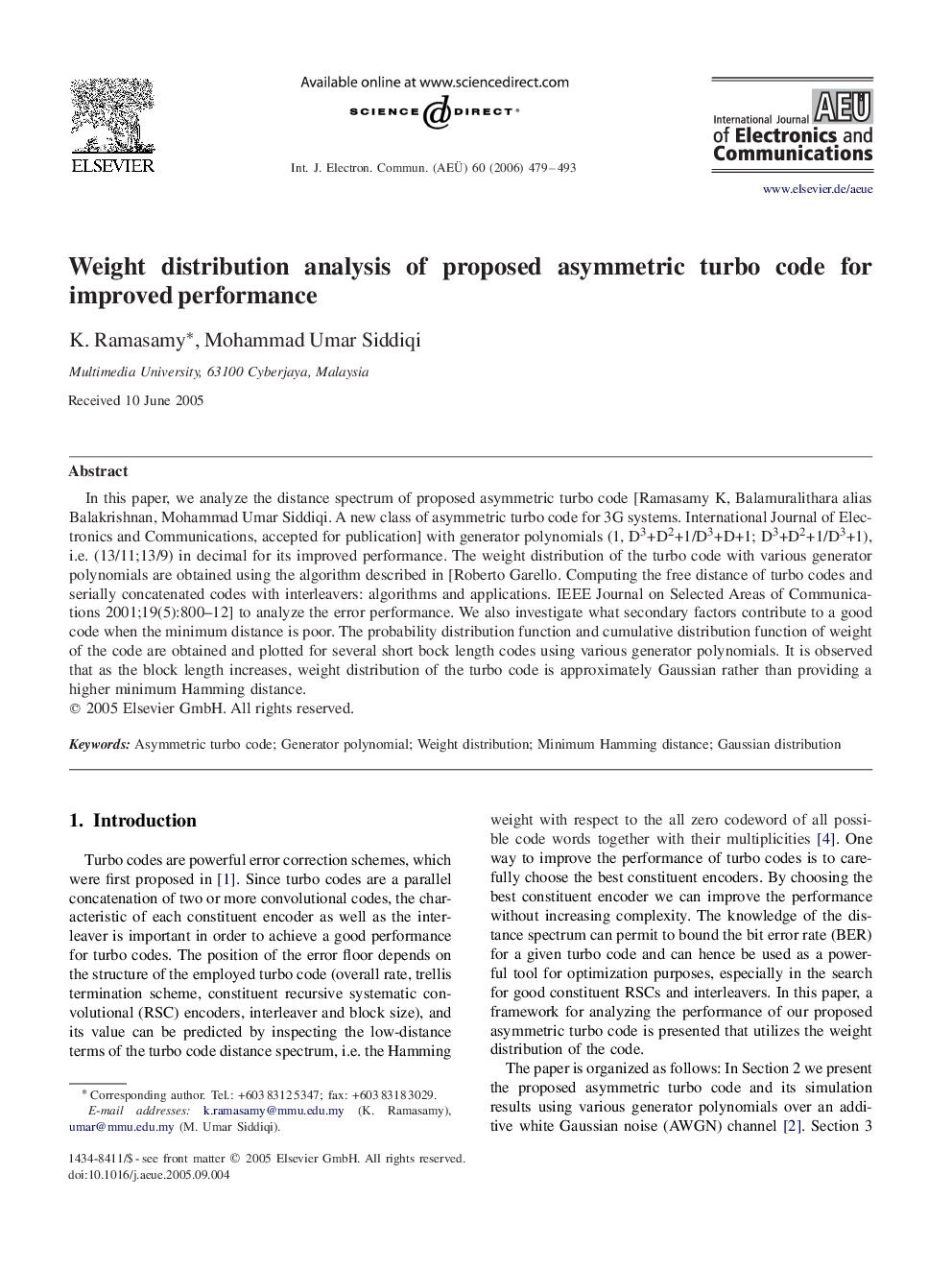| Article ID | Journal | Published Year | Pages | File Type |
|---|---|---|---|---|
| 449797 | AEU - International Journal of Electronics and Communications | 2006 | 15 Pages |
In this paper, we analyze the distance spectrum of proposed asymmetric turbo code [Ramasamy K, Balamuralithara alias Balakrishnan, Mohammad Umar Siddiqi. A new class of asymmetric turbo code for 3G systems. International Journal of Electronics and Communications, accepted for publication] with generator polynomials (1, D3+D2+1/D3+D+1; D3+D2+1/D3+1), i.e. (13/11;13/9) in decimal for its improved performance. The weight distribution of the turbo code with various generator polynomials are obtained using the algorithm described in [Roberto Garello. Computing the free distance of turbo codes and serially concatenated codes with interleavers: algorithms and applications. IEEE Journal on Selected Areas of Communications 2001;19(5):800–12] to analyze the error performance. We also investigate what secondary factors contribute to a good code when the minimum distance is poor. The probability distribution function and cumulative distribution function of weight of the code are obtained and plotted for several short bock length codes using various generator polynomials. It is observed that as the block length increases, weight distribution of the turbo code is approximately Gaussian rather than providing a higher minimum Hamming distance.
